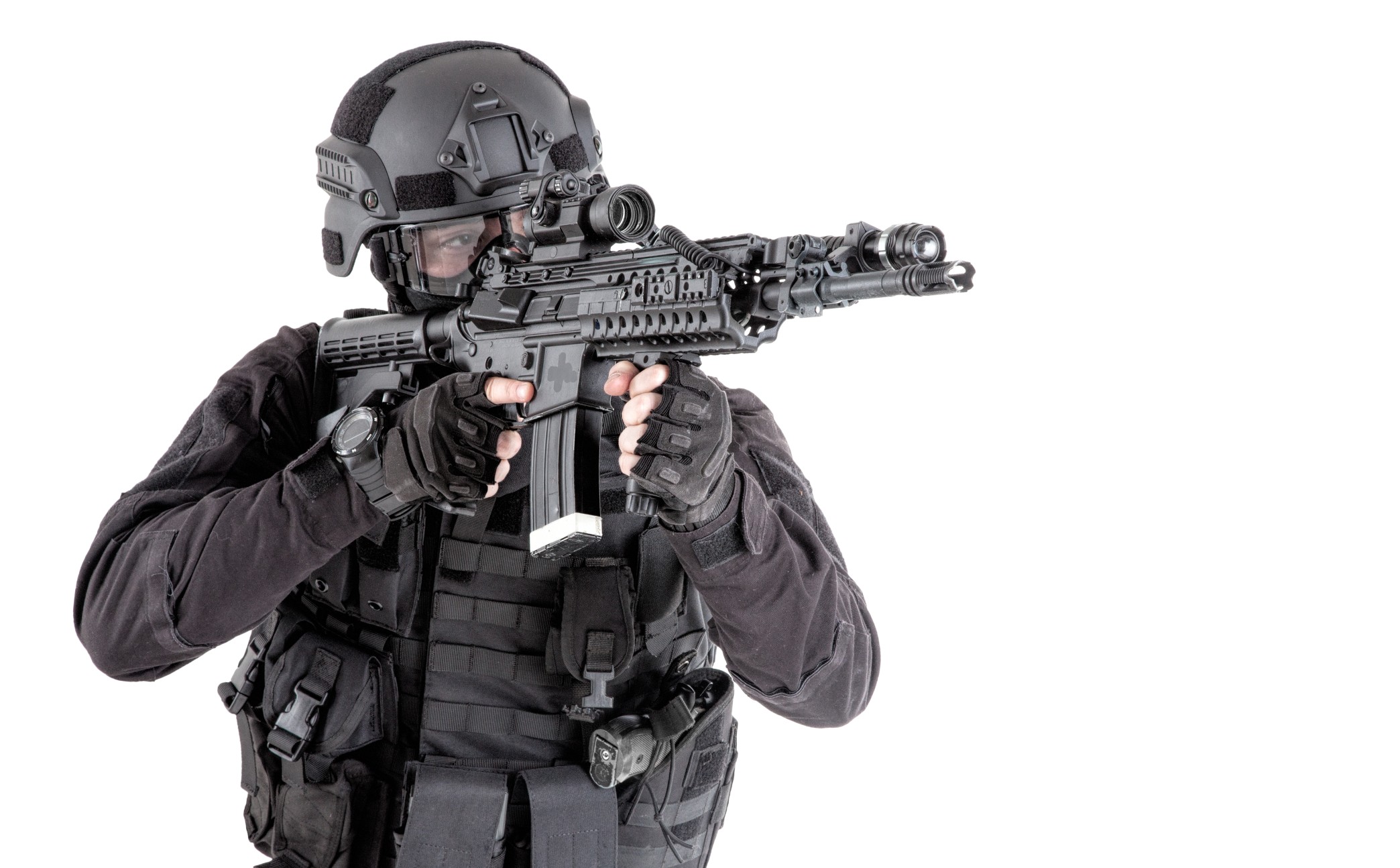Small Arms and Light Weapons – The Essential Tools of Ground Forces

Small arms and light weapons (SALW) are the backbone of infantry units and special forces around the world. These versatile, portable, and often highly effective tools provide military personnel with the firepower needed for close-quarters combat, reconnaissance, and even counter-insurgency operations. From rifles and machine guns to grenade launchers and portable anti-tank systems, SALW remain indispensable in both conventional warfare and asymmetric conflicts.
Despite the increasing importance of advanced technology and heavy firepower in modern warfare, SALW continue to play a critical role in ground operations. Whether in urban environments, dense forests, or desert combat zones, small arms are the primary tools for individual soldiers and units on the front lines.
In this blog, we’ll explore the evolution of small arms and light weapons, their various types and roles on the battlefield, emerging technologies in the development of SALW, and how AiDOOS can help defense contractors stay ahead in designing and producing the next generation of these essential tools.
The development of small arms has been closely linked to the evolution of warfare itself. Early firearms, such as muskets and flintlock pistols, revolutionized combat by allowing soldiers to engage enemies from a distance with projectiles. By the 19th century, the advent of rifled barrels, percussion caps, and smokeless powder led to the creation of more accurate, reliable, and powerful small arms.
The 20th century saw further advancements in small arms technology, with the introduction of automatic rifles, submachine guns, and light machine guns. These weapons gave soldiers greater firepower, allowing them to suppress enemy forces and engage targets more effectively in both offensive and defensive operations.
In modern warfare, SALW have continued to evolve, incorporating advanced materials, improved ergonomics, and enhanced optics. Today’s small arms are lighter, more accurate, and more adaptable than ever before. Whether used by regular infantry or special forces, these weapons remain crucial in a wide range of military operations.
SALW encompass a broad range of weaponry, from handguns to man-portable anti-tank systems. Here are some of the most common types of SALW used by military forces today:
Assault Rifles: The assault rifle is the standard weapon for most infantry forces. Capable of both semi-automatic and fully automatic fire, these rifles are designed for versatility, allowing soldiers to engage targets at various ranges. Iconic examples include the AK-47, M16, and HK416. Modern variants are often equipped with advanced optics, suppressors, and modular accessories that enhance their effectiveness in different combat scenarios.
Submachine Guns (SMGs): SMGs, such as the MP5 or Uzi, are designed for close-quarters combat. They fire pistol-caliber rounds and are lightweight, making them ideal for urban warfare, building clearing, and special forces operations. SMGs are favored for their portability and rapid rate of fire, though their range is more limited compared to assault rifles.
Machine Guns: Machine guns provide suppressive fire, enabling infantry units to pin down enemy forces and disrupt their movements. Light machine guns (LMGs) like the M249 SAW can be carried by individual soldiers, while heavier models, such as the M240 or PKM, are often mounted on vehicles or tripods for sustained fire. Machine guns are essential for both offensive and defensive operations, giving infantry units the ability to engage multiple targets at once.
Sniper Rifles: Sniper rifles, such as the M40A5 or the Barrett M82, are designed for long-range precision shooting. These rifles allow marksmen to engage high-value targets, enemy personnel, and equipment from a safe distance. Modern sniper rifles are equipped with high-powered optics, suppressors, and bipods, making them highly effective in both urban and open-field environments.
Pistols and Sidearms: Pistols serve as backup weapons for soldiers, particularly for officers, vehicle crews, and special forces. While not as powerful or long-range as rifles, pistols like the Glock 17 and SIG P320 are critical in close-combat situations where larger firearms may be impractical.
Grenade Launchers: Grenade launchers, both standalone and under-barrel-mounted, provide infantry with the ability to engage enemies behind cover or inside buildings. The M203 and HK AG36 are examples of grenade launchers that can fire explosive, smoke, or illumination rounds, adding versatility to the soldier’s arsenal.
Portable Anti-Tank Weapons: With the increasing threat posed by armored vehicles, infantry units are often equipped with man-portable anti-tank systems. Weapons like the RPG-7, Javelin, and NLAW allow soldiers to engage enemy armor and fortifications at medium ranges, providing a critical capability against mechanized forces.
While SALW have remained relatively consistent in their basic design and function, recent technological advancements are transforming their capabilities in significant ways:
Modular Weapon Systems: Many modern small arms are designed with modularity in mind. This allows soldiers to customize their weapons with different attachments, including scopes, grips, suppressors, and under-barrel launchers. The HK416 and FN SCAR are examples of modular rifles that can be configured for different combat roles, from close-quarters battle to long-range engagements.
Advanced Optics and Sighting Systems: Optics and aiming technologies have significantly improved the accuracy and effectiveness of small arms. Red dot sights, holographic sights, thermal imaging, and night vision optics are now standard on many rifles and machine guns, enabling soldiers to engage targets more accurately in all lighting conditions.
Smart Ammunition: Smart munitions, such as programmable airburst grenades and guided projectiles, are being integrated into small arms systems. These munitions can be programmed to detonate at specific distances, improving their effectiveness against entrenched enemies or targets hiding behind cover. The XM25 grenade launcher is an example of a weapon system that employs smart munitions for enhanced battlefield capabilities.
Lightweight Materials: The use of advanced polymers and lightweight metals in the construction of SALW has reduced the overall weight of these weapons without compromising durability. This allows soldiers to carry more ammunition and additional equipment, improving their mobility and endurance in combat.
Silencers and Suppressors: Suppressors are becoming more common on military rifles and machine guns, providing soldiers with the ability to engage targets without revealing their position. Modern suppressors are designed to reduce both the sound and muzzle flash of firearms, making them especially valuable in special operations and reconnaissance missions.
Laser and Electronic Targeting Systems: The integration of laser targeting systems and electronic fire control systems into SALW has improved both accuracy and speed in target acquisition. These technologies allow soldiers to engage targets more efficiently, even in high-stress combat environments.
Despite the increasing reliance on advanced technologies, drones, and heavy artillery, small arms and light weapons remain the core tools of ground forces. SALW are often the first and last lines of defense for infantry units, enabling soldiers to engage the enemy in a wide range of environments, from urban combat zones to rural battlefields.
In asymmetric conflicts, where traditional armies may face irregular forces, SALW are critical for providing individual soldiers with the firepower needed to respond to unpredictable threats. In these situations, light, portable, and adaptable weapons are essential for counter-insurgency and counter-terrorism operations.
Additionally, SALW are crucial in special operations missions, where stealth, speed, and precision are required. From hostage rescues to reconnaissance missions, SALW provide elite forces with the tools they need to accomplish their objectives efficiently and effectively.
The design and production of modern small arms and light weapons require expertise in ballistics, materials science, ergonomics, and software development. Defense contractors must continuously innovate to meet the changing needs of military forces, improving the accuracy, reliability, and versatility of SALW while incorporating new technologies.
AiDOOS offers a unique solution by connecting defense contractors with a global network of specialized talent. Whether it’s designing advanced optics, integrating smart munitions, or improving materials for lightweight weapons, AiDOOS provides access to the expertise needed to accelerate the development of next-generation SALW. By leveraging AiDOOS, defense companies can scale their teams dynamically, ensuring they have the right skill sets to meet project requirements and deliver innovative solutions to the battlefield.
AiDOOS’s end-to-end project management ensures that defense projects are completed on time, within budget, and to the highest standards of quality, allowing defense contractors to focus on bringing the best SALW technologies to market.
Looking ahead, the development of SALW will continue to focus on improving accuracy, mobility, and adaptability. Advances in materials, optics, and smart munitions will make future small arms more capable in a wide range of combat scenarios. AI-driven targeting systems, modular designs, and enhanced ergonomics will further enhance the effectiveness of infantry units and special forces in high-intensity conflicts.
Small arms and light weapons remain an indispensable part of modern military operations, providing the firepower, mobility, and flexibility needed to engage enemy forces in diverse combat environments. As new technologies continue to shape the battlefield, SALW will evolve to meet the demands of modern warfare, ensuring that soldiers are equipped with the best tools to accomplish their missions.
With the support of platforms like AiDOOS, defense contractors can stay at the forefront of SALW development, bringing innovative solutions to the market that enhance the capabilities of military personnel on the front lines.

By redesigning packaging, exploring reusable models, investing in smart tracking, and leveraging the VDC model for execution, beverage manufacturers can reduce their environmental footprint while boosting their brand relevance and operational resilience.

Even the most capable in-house IT teams often fall short when it comes to minimizing downtime. While Managed Services solve much of the downtime problem, the VDC model supercharges it with flexibility, scalability, and domain-specific expertise.